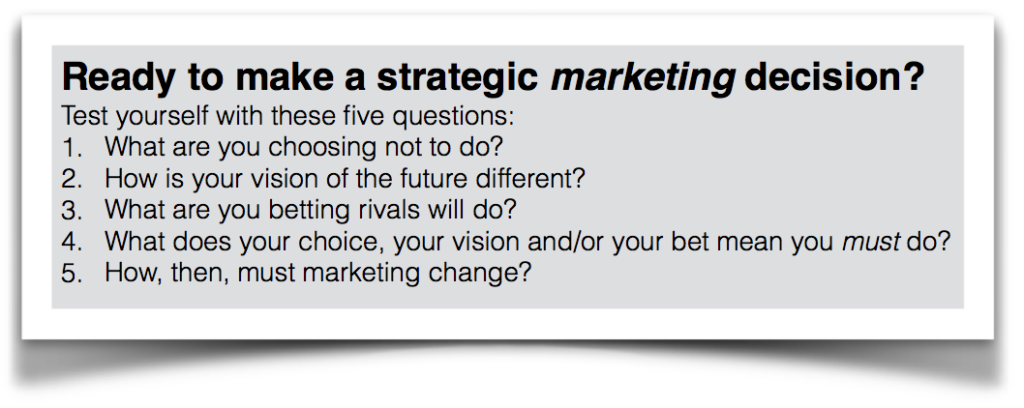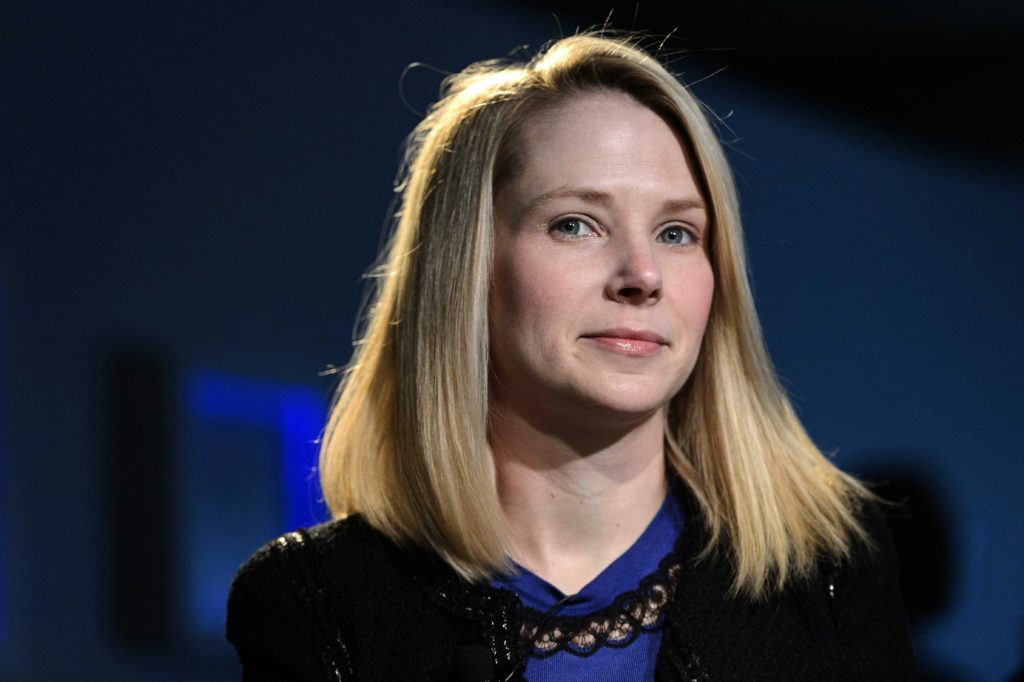|
Author Archives: MortarMark
August 27th, 2016

As most of Mortar’s work is in activities defined by group decision making (tourism, technology, education and healthcare) a call to develop individual target personas can leave us scratching our heads. Understanding the fabric that connects teams can be more useful.
Consider the rise of the DevOps movement in IT. DevOps teams boost productivity by eliminating the gap between creator and executor. To ignore the conversation between these two as they move through their day is to fail to grasp what they agree—and what they need to succeed. (Hence Slack “the messaging app for teams” and Atlassian’s Jira “the software development tool for agile teams” positioning as group-based collaboration tools).
And it’s not just tech that is rediscovering the importance of targeting teams. As the Cleveland Clinic’s Dr. James Young sees it, “health care’s no longer a gladiatorial sport with one person — no matter how smart — going up against the challenges. Instead, it’s a team effort, and today’s medical education has begun to reflect that trend”.
In some categories, persona development can be too blunt a tool for exploiting motivation. If you need to target team decisions, look hard at riding the wave of group dynamics. Here are five ways understanding connective tissue can bring your marketing back from the dead:
1. Teams are groups of individuals united by a common purpose.
Even if the reason people work together is the same, how they see their work will vary substantially. Simple one-on-one interviews (by phone) with team members is a good way to map the contours of a committee. For another perspective, see Deloitte’s Kim Christfort on their (fresh) approach to personality profiling here.
2. Groups talk. So connect to what they say to one another.
What is the nature of the conversation on the team? Who talks to who and about what? Ask them. Gather them together in groups of two and three and listen to what they say to one another. Pay special attention to the words they use. The roles they assume. And be especially conscious to of the topics they avoid.
3. Groups decide. So figure out how they make a call.
Miller & Heiman write convincingly about the buying roles of complex teams, counseling Sales to pay attention to “buying influences” and identify a coach who can help pluck signals from the noise. Despite apparent similarities, different groups will draw radically alternative conclusions from the same data. Charting the path they might follow is a useful marketing strategy especially in big ticket sales.
4. Groups analyze. Winning is as much a team sport as an individual mark of accomplishment. Goals are the primary connective tissue.
 Give some time to considering shared goals. Goals always have three dimensions: quantity (amount, numbers, clicks), quality (feelings, perceptions, vision) and time (you want it when?). How many digital marketing teams are so focused on the clickstream that they ignore the other two dimensions? Addressing goals can be an effective way to cement disparate people and bring them closer to buying your product. Make sure you address all three categories. Give some time to considering shared goals. Goals always have three dimensions: quantity (amount, numbers, clicks), quality (feelings, perceptions, vision) and time (you want it when?). How many digital marketing teams are so focused on the clickstream that they ignore the other two dimensions? Addressing goals can be an effective way to cement disparate people and bring them closer to buying your product. Make sure you address all three categories.
5. Groups feel: how does the group change when they use your product or service? Every group can be unified by insight about their customer.
What happens to their customers—and how does that impact the team? Teams that succeed feel different than those that don’t. Pride and accomplishment are attractive and viral because success has many fathers but failure is an orphan. Demonstrating how your product can help everyone on the team win, can work to motivate individuals and groups.
We chose the name Mortar because we are obsessed with the importance of connective tissue. Our business is differentiation–yours and ours. Applying the same tools to the same problems rarely yields fresh answers. If you are having trouble convincing the world what you are doing is indeed special, take time to dig under the cushions for the connections that spur action.
July 30th, 2016
Isn’t it time we stopped thinking about people as consumers, customers, clients or, heaven forbid, a target audience.
And started thinking about them as a community.
A group of like-minded souls with the power to engage with your organization, your products and with each other?
By helping our clients tap community, we’ve helped create over $14 billion in market value.
From software to security; self-improvement to longevity; destinations and experiences; Mortar has focused on tapping the power and potential of our client’s and their communities.
Think about it. If we are aiming our messages at a community we need to think of our audience in that way. As people who talk to one another. About us.
And we are all talking to communities. Sure, each of us is interested in a different sub-set of humanity.
Whether we divvy up our customers by job title, culture, affinity, identity, location or some other factual or emotional profile, our customers are best thought of as a group. Community members chatter with one another about what they see and experience in text, Instagram, on Facebook, on Twitter, Tumbler and at the coffee shop.
Which means that we marketers should think of ourselves as community managers and leaders. As Mayors. Senators. Congressmen. PTA stewards. Chefs. Generals. Mothers. Fathers. Leaders. Educators.
If we miss this essential step we fail to understand who we are talking to and, it follows, what really matters to them. Which is why so much of what marketers say—either directly or through their agents—falls flat and fails to inspire.
Communities are shaped by common beliefs, a level of affinity and similarity. Every community has a special kind of connective bond. The links we share, the invisible dark matter that cements one human to another, is the raw material of great marketing.
Mortar is an advertising agency. Yes, an advertising agency. We don’t apologize for being what we are. And neither do we let it keep us up at night. Our job is to persuade, cajole, brighten or otherwise compel communities to buy what our clients are selling.
What sets us truly apart is in our name: Mortar. We are all about the glue that binds groups to action, thought to outcome, products to change.
We believe every single marketing assignment needs to start with deciding what unites the community we care about. Then we can make Strategic Marketing Decisions about how we will approach the group: what has the capacity to drive them wild with desire.
We enshrine this strategic decision in writing. And we match it with a sudden gasp of surprise—a A-ha moment. You will understand it as the moment a promise connects with an individual and fuels a conversation.
These three elements: a belief that connective tissue is the key to understanding today’s customer, that a decision must be made about which way to go, and that everything needs to ladder up to a single a-ha moment, differentiate our work.
None of it makes sense without a solid, unyielding, firm grasp of what unites—and separates.
July 30th, 2016

Since 2002 Mortar has been a big idea agency. But no more. We have decided to change.
Read on for why you might want to join us.
Until this year we believed the essential elements of a project should be condensed onto a single page. Each of the briefs we developed were organized around a bold and inspiring big idea.
The big idea was Mortar’s launching pad for iteration and creative thinking. (Read more here).
In 2016, we replaced the big idea with two steps: a strategic marketing decision (SMD) and an A-ha moment. This article deals with the SMD, I’ll publish on the A-ha soon.
Instead of arguing to a big idea we make a big decision about how to market. To decide what we will do differently this time. To articulate how the message should change because the way we see the world—and the client’s customer community—has also shifted.
Introducing Strategic Marketing Decisions
We call them strategic marketing decisions (SMD). Making one can be a lot harder than it sounds.
For example, let’s take the problem that plagues Yahoo: is the massive internet property a media or a software company?
If it is a media company, then content production and delivery should be its priority. Hiring Katie Couric, buying Tumblr, paying big money to stream the NFL, these are all moves in the right direction. And they contribute to Yahoo’s unique value.
But what about engineering new forms of engagement?
Take say, Pokemon Go’s innovative use of augmented reality (AR). Pokemon Go is a game. It is an app. But it is also an engineering marvel. By smart use of AR, geolocation, and a sprinkling of inspired game theory, Go’s engineering team created a new form of participatory entertainment.
You just don’t get that type of engineering from a media company, you have to be all in on being a software company.
To walk through one door is to decide not to walk through another. In marketing it is never wise to be all things to all people. Effective marketing requires focus. Focus requires choices and decisions. Many argue that Yahoo failed to prosper because it failed to decide one way or another: and the lack of clarity sapped the company of vital energy, spurring multiple failed investments and inexplicable changes in direction.
What makes a decision a Strategic Marketing Decision?
The BBC defines strategic decisions as “long term, complex decisions made by senior management. These decisions will affect the entire direction of the firm”.
At Mortar, Strategic Marketing Decisions, are decisions that impact the direction of, well, marketing. But they need not be long-term. Just clear and wide-ranging. Like deciding to act like a leader. Or to line up behind a new vision. Or to take a position quite unlike a rival. SMDs are decisions, about marketing, that have important implications.
Writing for the Harvard Business Review Phil Rosenzweig in “What makes strategic decisions different?” describes the basic types of decision. Here’s how they apply to the SMD:

1. Choice
Making a choice can be a strategic move. Many an organization is plagued by its inability to choose—and thus find its focus. Just by clarifying the need for a decision we can often find a new way forward.
Take Vancouver-based Westport Innovations as a example. When Westport came to Mortar they described themselves as “a Canadian IP company”. We very nearly hung up. But after visiting them we realized Westport was, more than anything else, a natural gas engine company. Oh sure they did a host of other things—like make small engine parts and work with other forms of fuel like Hydrogen—but the heart of engine maker thumped at Westport’s core. By making the strategic marketing choice to focus messaging around natural gas engines they could turbocharge the way they talked about themselves and their mission.
2. Inspirational Vision.
“In so much of life, we use our energy and talents to make things happen. Imagine that the task at hand is to determine how long we will need to complete a project. That’s a judgment we can control; indeed, it’s up to us to get the project done. Here, positive thinking matters. By believing we can do well, perhaps even holding a level of confidence that is by some definitions a bit excessive, we can often improve performance.” (Rosenzweig).
In marketing, a decision to make something happen can also be strategic.
By suggesting that a trip to the city of Reno is actually a visit to the Reno/Tahoe area, we remind travelers to the big blue lake that the joys of the bacon-wrapped cheese log of vacations is just minutes away. An example of positive thinking influencing outcomes if ever there was one.
Planting a flag on the hill as a symbol for all to follow can be an inspiring move, and work to spur creativity.
3. Betting.
“The best decisions must anticipate the moves of rivals. That’s the essence of strategic thinking, which [we can] define as “the art of outdoing an adversary, knowing that the adversary is trying to do the same to you.” (Rosenzweig).
Deciding which way the game will go can also be a candidate for a strategic decision about marketing.
A lot of what we decide is based on what we think a rival will do. Strategic decisions based on reading a rival’s tea leaves are wonderful raw material for marketing.
In marketing, deciding to decide can make the difference between success and failure. Watch for my next post: the A-ha moment that follows from the SMD.
July 25th, 2016

Yahoo! is going to join AOL in Verizon’s growing stack of web businesses. As one commentator chirped “the 90’s are alive and well at Verizon“. But if you are like me, you will be struck by how uncharitable today’s coverage is of Marissa and her Yahoo turn around.
- She did it. Perhaps the first thing everyone is missing is that Mayer solved the Yahoo problem. Yahoo was going nowhere fast until this morning. Now it has a new lease on life, a parent who understands the future will be mobile and social, and no more pesky, activist VCs. The problems of a looming tax bill for Alibaba’s incredible success appear to go away too (Mayer inherited a 15% stake in Alibaba that is now worth $28 billion—sparking concerns the struggling internet giant would redirect its gains in shoring up Yahoo’s business).
- She netted a $4.8bn price tag for Yahoo… which, yes, was worth $200 billion back in the day. But that day is some 20 years and a Google and Facebook ago. Yahoo has suffered for years because of the mistakes the company made long before Mayer. (Well if you can call failing to buy Google and Facebook a mistake: because to be charitable, there were a lot of companies who dropped that clanger—Apple, IBM, Oracle, Hearst, Rupert Murdoch to name a few). Web businesses age in dog years: in Silicon Valley 20 years is a lifetime.
- And she managed to have three babies in the course of her tenure as CEO. That fact alone should be stirring the voices of support and awe. If we are at all serious about the continued ascendancy of women to the executive branch of our society, Marissa Mayer did arguably more on that front than most.
- She resolved Yahoo!’s identity crisis. Mayer introduced the term MAVENS to describe the company’s focus on advertising sales in mobile, video, native advertising, and social. Yahoo was always a media company. Even from the early days when it was home to a legion of web surfers who individually classified websites by hand (how ridiculous does that sound now?), despite efforts to move it more into the engineering camp, Yahoo was never a software powerhouse. Yahoo started off as a media company and it grew with its culture. Even attracting Terry Semel from Warner Bros, as one of Mayer’s four predecessors. Yahoo is a media company—which means it lives and dies by advertising revenue–and the future of media is mobile and social. Mayer realized that as quickly as her rivals at Google and Facebook. Only she had to drag her company dragging and kicking into the MAVENS age.
- She admirably played her role as the top executive for the Yahoo community. I am reminded by her decision to give the community a voice in the redesign of the Yahoo logo—which she accomplished by survey. But unlike less savvy rivals she did not make the results public—opting instead to thank the community for making their voice known and acknowledging the community did play some role in the final decision. Masterful. Contrast her actions as leader of that community with, say, how well Reddit handled their recent issues and it’s clear that Mayer does know a thing or two about being an incredibly visible and high profile spokesperson for a community that lost its relevance in Silicon Valley years ago. Let’s remember, communities that started hot but come to be regarded as irrelevant tend to be resentful and inwardly-focused (for an example consider my fellow British countrymen’s horrendous decision to allow the fear of immigration to drag them out of the European community). Playing spokesperson for a global group struggling to be sexy and cool again is a tough gig, no matter how you cut it.
So as you review the coverage over the next few weeks, this commentator believes Marissa Mayer deserves a hearty round of applause for solving the hardest problem in marketing: how to turnaround a failing internet brand.
Bravo, Marissa.
June 9th, 2016

It’s been months since we announced we would live without the storied Big Reveal (BR)—the final, much anticipated unveiling of a creative solution after weeks of frenzied (and secret) hibernation. (A presentation that is supposed to leave clients in awe and the agency bursting with pride).
The Big Reveal is the essential Mad Man moment. And it has been a staple of agency presentations for as long as there have been agencies. And, I suspect (well, actually, I know from experience) it is no more effective now than it was then.
So yes, that’s the process we stood up last summer—choosing instead to forgo a little magic for some back-to-basics communication and partnering. So what happened? Without further ado, here’s what you need to know about life after the Big Reveal:
- You can significantly accelerate creative development, but it hurts. Greater velocity can be achieved if you have the right team, are willing to say yes at the worst possible times, and are comfortable being the agency clients turn to when no one else will touch the job because they’re not ready, willing or able to move at that kind of speed. Mind you these types of jobs have a lot of attractive qualities: they are almost always high priority, interesting and can be wonderfully challenging.
- You need willing clients if you intend to scale at speed: no surprise there. Service businesses like ours rely on vague notions of process and the ability to provide concrete assurances that the solution will be in your inbox tomorrow—even though we know full well that the idea might be hard to come by and we could still be playing peek-a-boo well beyond the delivery deadline. Still, scaling the process so it works across multiple jobs and teams at the same time is undeniably tough. At speed,uncertainty multiplies, pressure builds much more quickly, and the danger of a miss pops-up overnight. On the brighter side, failure after a few days of work is rarely fatal. And clients are much more open to rolling up their sleeves and mucking-in when they feel the agency is as committed as they are to finding a solution quickly.
- It’s a rare client who does not like to look at ideas early and often. But they do exist. And those who prefer the Big Reveal won’t give you their business because life without the Big Reveal is scary. Unpredictable. And unproven. Plus considering ideas “early and often” can sound like hard work. Not every marketing leader is comfortable judging creative or throwing their own ideas into the mix. Seriously, a big prospect recently told me that he didn’t “care for the Mortar process” because it did not resemble the way he had learned to develop and judge marketing. But that’s his prerogative. Mortar-ready clients leap at the chance to review ideas in a rough form, to dig into it with us, put on their creative hats and embrace the chance to fully participate in the riffing of new possibiltles.
- If creative development speeds up, everything else has to too. I never quite appreciated the breather that the Big Reveal gives the entire agency value chain: account, strategy, media, partner and client are much more comfortable delivering quality work over time. BR work can be resourced and scheduled. Changes are easy to accommodate. Projects can move forward in sequence. Life is more predictable. Kick the legs out from under the Big Reveal and everyone has to pick up the pace. Early ideas flare and die quickly. And a positive response is followed by a demand for more details: how will this work? What is your POV on media? How about activation ideas? What are the implications for brand and measurement and the longer term? Just because you have trashed the Big Reveal doesn’t mean you can get away with not knowing. And let’s not forget that saying “yes, we’ll have that for you tomorrow” will often be followed by another, similar fresh request that very same day. Speed can be very addictive, especially when combined with quality. But it can contribute to burn-out.
- Meeting clients’ need for speedy solutions builds confidence quickly and leads to a lot more work. Our clients are at war with one another. A few days saved here quickly translates into competitive advantage there. Good solutions delivered fast are often executed just as promptly. Many of us wish it was otherwise—but it isn’t. The future belongs to the swift. And the swift are onto the next thing by the time the Big Reveal rolls around.
- Expect to change everything else too. Nine months in and we whiteboard more than we ever have. We have developed so many different flavors of brainstorm that we now non-ironically regularly refer to “MortarStorming.” We have ditched the pursuit of a single Big Idea in favor of a combination of identifying a “Strategic Decision” and one, compelling, “A-Ha Moment” (more on those two soon I promise). Oh and we have built a team of fierce collaborators with thick skins and a growing disdain for big agency thinking and process.
So, after all this time, would we go back and snuggle up with the Big Reveal? Not a chance. Won’t you join us?
|

 Give some time to considering shared goals. Goals always have three dimensions: quantity (amount, numbers, clicks), quality (feelings, perceptions, vision) and time (you want it when?). How many digital marketing teams are so focused on the clickstream that they ignore the other two dimensions? Addressing goals can be an effective way to cement disparate people and bring them closer to buying your product. Make sure you address all three categories.
Give some time to considering shared goals. Goals always have three dimensions: quantity (amount, numbers, clicks), quality (feelings, perceptions, vision) and time (you want it when?). How many digital marketing teams are so focused on the clickstream that they ignore the other two dimensions? Addressing goals can be an effective way to cement disparate people and bring them closer to buying your product. Make sure you address all three categories.



